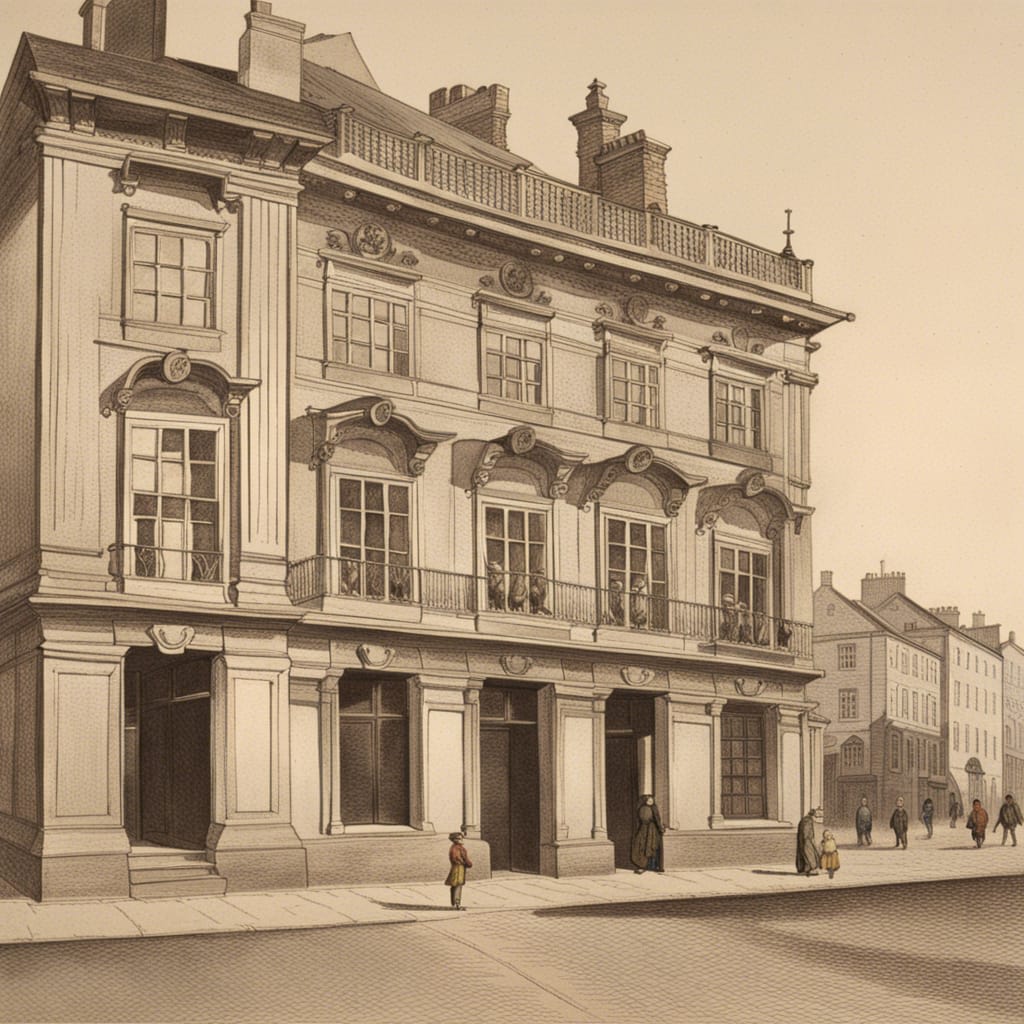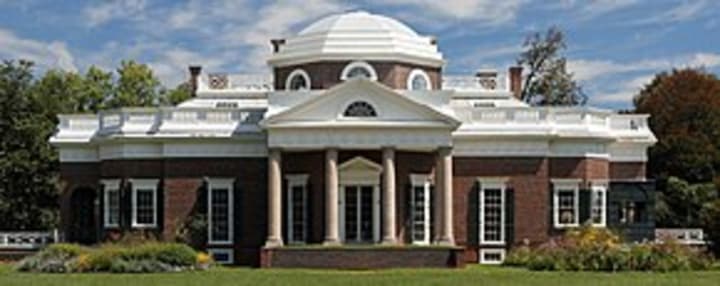Banking and slavery in the 18th-19th Century
Assets and ownership

In the book "The Devils Half Acre", by Kristen Green, she highlights the practice of utilizing slaves as a means of collateral for the purpose of banking. I must say that I never before thought of people being a means of asset ascertainment to loans from a banking institution, neighbors and friends.
When enslavers needed to borrow money from anyone, they simply offered up the enslaved people as collateral, thus enabling them to obtain significant sums of cash and also obtain credit.
Thomas Jefferson mortgaged one hundred and fifty (150) of the people he enslaved in order to build his Monticello home.

"Monticello was the primary plantation of Thomas Jefferson, a Founding Father and the third president of the United States, who began designing Monticello after inheriting land from his father at age 14. Located just outside Charlottesville, Virginia, in the Piedmont region, the plantation was originally 5,000 acres, with Jefferson using the labor of African slaves for extensive cultivation of tobacco and mixed crops, later shifting from tobacco cultivation to wheat in response to changing markets. Due to its architectural and historic significance, the property has been designated a National Historic Landmark. In 1987, Monticello and the nearby University of Virginia, also designed by Jefferson, were together designated a UNESCO World Heritage Site. The current nickel, a United States coin, features a depiction of Monticello on its reverse side". (wiki).
Enslaved people were easier to sell than land. In some Southern states, more than eight (8) in ten (10) mortgage-secured loans utilized enslaved people for collateral. So, plantations were built on the backs of slave labor, yet some would have it that Black people have no rights in the countries where they toiled, bled and died for the advancement of whom?
Bonnie Martin, the historian notes that "slave owners worked their slaves financially, as well as physically, by mortgaging the enslaved people in order to buy more enslaved people" (and build more mansions as their testament to their power over other human lives).
Credit was widely available at banks. Citizens Bank and Canal Bank in Louisiana, two subsidiaries of JP Morgan Chase, accepted as collateral, some thirteen thousand enslaved people between 1831 until the end of the Civil War in 1865. As a result of this practice, banks had to take ownership of enslaved people when the loan recipients defaulted. After foreclosure, one bank owned an estimated 1,250 enslaved people for a period of time, and on occasion, a bank could seize an entire plantation, including the enslaved people who lived there.
The 'liquidation' of these assets would then become reliant upon the slave traders to then sell these 'assets' to repay their 'masters' debts. Banks were also forced to search for some enslavers who absconded with the enslaved 'assets' whom they had previously offered as collateral, while they were trying to foreclose on the defaulters. Enslaved people were sent to other plantations to work off their enslaver's debts. A very vicious cycle of human lives treated as mainly things to be owned and bartered.
Mortgages for enslaved people were required to be recorded just like mortgages for homes. An enslaver had a mortgage drawn up by a notary, listing the enslaved person's name and age, and then recorded the mortgage at a city or county courthouse.
Some enslavers had no compunctions or qualms about selling their own children, born of enslaved women, while others were protective of their children. If they defaulted on their loan, some would do anything to retain their plantation status.
The estate of Tennessee enslaver David Loge sold his own son along with the other enslaved people to appease his creditors, despite assurances to his son's mother that this would never happen. Two other enslavers, Robert Lumpkin, featured in Green's book, and Hilton Waddell did the complete opposite. They did everything in their power to protect their children and see to it that they were safely out of the reach of slavery.
If enslavers could see the value of children born to them, why could they not see the value of children born to the Black race. Where was the line of distinction drawn between one set of human beings versus another race which they enslaved.
‘Oh, what a tangled web we weave/When first we practice to deceive’.
..........................................................................
About the Creator
Novel Allen
Clouds come floating into my life, no longer to carry rain or usher storm, but to add color to my sunset sky. ~~ Rabindranath Tagore~~
Enjoyed the story? Support the Creator.
Subscribe for free to receive all their stories in your feed. You could also pledge your support or give them a one-off tip, letting them know you appreciate their work.
Reader insights
Outstanding
Excellent work. Looking forward to reading more!
Top insights
Eye opening
Niche topic & fresh perspectives
Expert insights and opinions
Arguments were carefully researched and presented
On-point and relevant
Writing reflected the title & theme
Compelling and original writing
Creative use of language & vocab
Heartfelt and relatable
The story invoked strong personal emotions
Masterful proofreading
Zero grammar & spelling mistakes
Easy to read and follow
Well-structured & engaging content







Comments (28)
I honestly enjoyed reading through it.
Absolutely eye opening!
This was so great, Novel. Fascinating and tragic.
Great article, Novel. It really is hard to believe that people were treated less than such.
Well this was eye opening and I really want to say shocking but I think I'd a fool to be shocked by the facts you've presented here.... Like... I can't even find real words to tell you how I feel about all this! Thank you for sharing this and bringing awareness to the injustices that were suffered not long enough ago! Also congrats on Top Story!
Great review of this book, Novel! I haven’t read it, but had heard of this disturbing piece of history. Thanks for your insight and congrats on top story!
https://vocal.media/criminal/the-orphan-killer-maguad-siblings-case-murder
So tragic & cruel... Thank God better days came. Thx for sharing your knowledge my friend.
It really is such a shocking and disturbing history. I haven’t read that book but I think I need to. Congrats on your Top Story!
I remember when I was like 10 seeing Roots docuseries and thinking wow this is next level awful. At age 13 I saw Amistad. Seeing as how slavery still happens breaks my heart. I'm sure you too feel like a slave in your own head with intrusive thoughts. We are truly blessed to be free. Congrats on ts
People as collateral. What an eye opening article. I think this is a book I might seek out. Congrats on TS.
wow!top story ~
Wow, I never thought about this before. This story was very informative and thought-provoking.
All I’m gonna say is God is great
Fabulously written!!! A sinister & evilness in our history!!! Congratulations on Top Story!!!❤️❤️💕
Congrats on another top story Novel! ☺️🎉
A tangled web indeed. I don't pretent to be smart enough to offer a solution to how we ever make that right. I was fascinated by one of your other commenters saying they saw a display about this practice over there in the UK. I was thinking surely this was not a North America specific practice. I am definitely going to read "The Devils Half Acre" Thank you for the food for thought and the book recommendation.
Cruelty had no limit. True history!
Interesting history!
Dark times, indeed! Thanks for the important history lesson.
I’ve never heard of this connection with the banks and slavery either. Yuck! Thanks for your article. I hope you are going alright!! 😊
This was just so scary! Cruelty had no limit. I don't understand why was there so much of discrimination.
Incredible, just incredible. I went to the bank of England museum in London a few months back and they had a section on the links between the bank and slavery.
In many ways that are very concrete, we are all now collateral for the banking systems, linked in with a number into all AI decisions concerning the future of our society. Yay, a new form of oppression! At least people won't realize what's going on til future generations. :) great work, very informative and thought provoking.
The Devil's Half Acre aims a light on information we cannot afford to leave dark. The people as property scourge... is the reason I made sure that the Bishops family in The Waters We Bring were property owners, not property. Kudos, Novel! 💙👏✍️💙